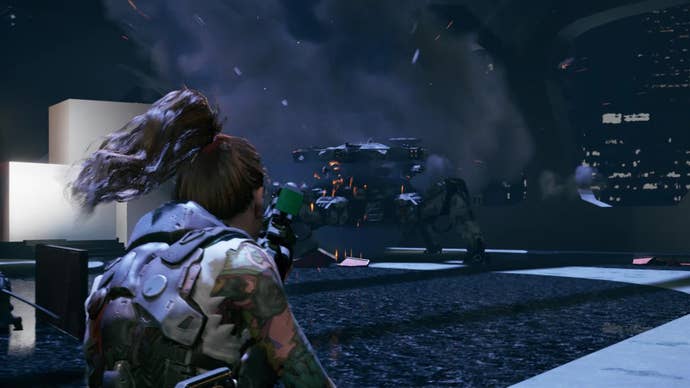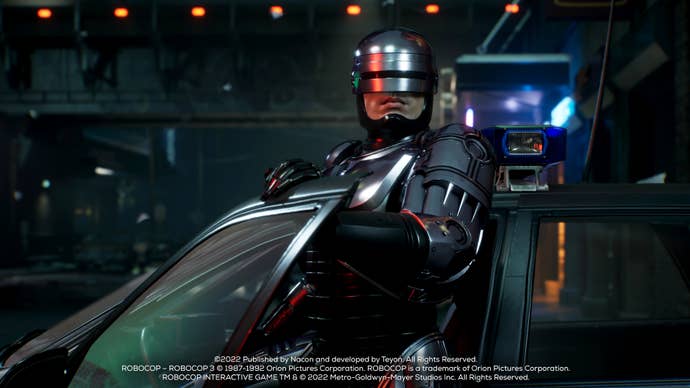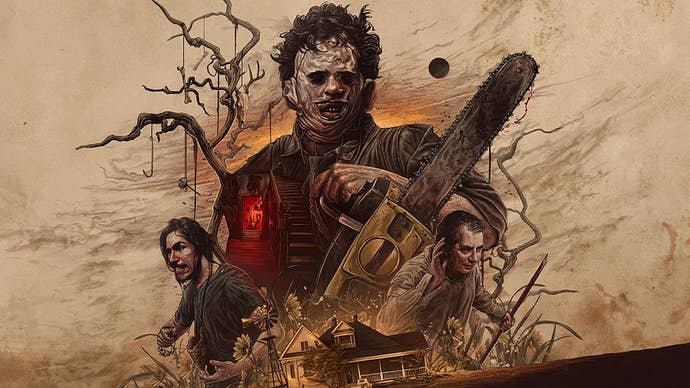Forget triple-A GOTYs, 2023 was year of the ‘B game’
2023 is the year B games became comfortable being themselves, and confident enough that there’s an audience who wanted just that.
It’s common to hear 2023 referred to as one of the best years we’ve had in a while when it comes to the quality of video games consistently releasing throughout the year. But I’d like to argue that it’s also the year many B games established themselves as more than just the stuff you skip past when you’re looking at the calendar.
The definition of what a B game is one we could spend all day arguing about, so I’m going to put forth what I believe to be a fair assessment of what a B game is. First, it’s important to keep in mind that the term has nothing to do with a game’s quality.
As I see it, a B game is a genre game. Which is to say, the game has a very clear focus on replicating something specific, delivering on a set of core mechanics, and generally favouring a limited, but tailored experience that ignores popular tropes, and sometimes even modern takes on that same genre.
For that to happen, a B game needs to have a modest budget, especially when compared to AAA games. The larger a game’s budget gets, the more broad its appeal needs to be. In short: not a lot of money, but a focus on a singular experience.
Remnant 2

I’ll start off with my favourite B game of the year: Remnant 2. Gunfire Games struck gold with the first Remnant. It was an ambitious and unusual attempt at melding Souls-like elements with third-person shooter mechanics. Remnant wasn’t the first to do this, which made it even harder for it to prove there’s undiscovered brilliance to be tapped into through that marriage of influences.
It was a hit, but more than that, it proved that, yes, there’s something to that approach. All Remnant 2 needed to do was build on that, focus on which areas flourished and which needed work - and it did that and more. Remnant 2 is more than just new content for a game you already played. It has overhauled so many of its systems to better align them with that initial vision that it may have actually risked alienating the same people who admired the original.
But things ended up only working out in its favour, because the intent behind all changes wasn’t to simply make the game more appealing to new players - though it only helped it grow that playerbase. Souls-likes not made by FromSoftware seldom get why those games' emphasis on discovery is the most interesting thing about them. The original Remnant understood that, and Remnant 2 builds upon that game’s brilliant idea to randomise the order of the worlds you visit, the layout of each level, and even which encounters you could run into and which you may only read about online.
It is perhaps the most successful B game at realising its goals and being perfectly comfortable in its own skin.
Wanted: Dead

Wanted: Dead represents what the modern video game industry left behind. When mid-tier publishers - your Midways and THQs - could no longer survive, we lost the experimentation and the commitment to (sometimes) misguided ideas that mid-budget games were very good at. You may not have loved Stranglehold, Wheelman, the SpyHunter reimagining or Jackie Chan Stuntmaster, but I’m willing to bet you played and perhaps enjoyed them.
Many franchises in THQ’s classic catalogue are still alive and well, and some are even getting sequels in 2024. The Remnant games likely wouldn’t exist without Darksiders, and I still have fond memories of Frontlines: Fuel of War multiplayer because of its Battlefield legacy.
Those games and many more like them may not end up on any GOTY lists, but they left a mark - even if only as a curiosity that offered a break from the deluge of AAA games of their time. Wanted: Dead is the best reminder of those days, and I almost see it as a long-lost project uncovered, finished and released in 2023.
Wanted: Dead delivers a nonsensical plot (that sometimes relies on equally nonsensical FMV) in a shooter, third-person action game hybrid. It does both well enough that it compels you to keep going and see more of its world. Is this scene just poorly translated from Japanese or is it intentionally meant to be cringey? I don’t know, and I don’t care!
Wanted: Dead is tonally inconsistent, has an unusual number of minigames, occasionally impressive boss fights, and a hub where you can spend more time with its characters and do menial tasks most games just don’t bother with. You have not played a game like Wanted: Dead this year, and I doubt we’re going to get something like it anytime soon.
Perhaps Wanted: Dead is what Tomonobu Itagaki imagined the awful Devil’s Third would be as he was making it.
Dead Island 2

The fact that Dead Island 2 is on a list of notable games in, well, any year, is quite an impressive feat in its own right. Languishing in development hell for a decade, and changing developers three times usually means you end up on the YouTube thumbnail of a video about the ‘worst games of all time’, right alongside Duke Nukem Forever and the like.
And yet, Dead Island 2 not only emerged as a competent zombie-slaying game at a time when everyone was clearly over zombies in video games, it also offered some of the most fun I’ve had slaying the undead in all my years fighting in games.
Dead Island 2 is not a complex game to describe, nor is it difficult to get into. It flirts with modern trappings like skill trees, and character abilities, but they don’t end up distracting from the core premise; a singular focus on providing opportunities to kill zombies in increasingly eccentric (and sometimes cruel) ways.
The extensive weapon crafting system and the deliberately not open world nature of its levels really drive that sense of focus home. There’s a more expensive Dead Island 2 that’s always online, with daily quests you grab from a hub, and some Hollywood stunt casting that exists in an alternate reality, but that’s not a game I want to play.
Meet Your Maker
_9DFFe5p.jpg?width=690&quality=70&format=jpg&auto=webp)
Meet Your Maker may not perfectly fit the description of what a B game is, but it has the spirit of one, and crucially, does something B games are traditionally very good at. So many of the most beloved B games are formed around an idea, a mechanic, or a certain core theme that makes up their entire gamble. In this case, it’s passive multiplayer.
Meet Your Maker’s whole concept is allowing players to build mazes of death traps and hide something valuable at the end of them. Everytime you log in, it wants you to browse what fresh hell someone on the other side of the world has created, which you must successfully conquer and survive to gain the resources it hides.
Resources which you will use in your own nightmarish creations, in upgrading your hub, researching insidious new trap tech, and even in upping your own chances of survival when you inevitably fail. It’s a game with action so well-calculated that its stakes rub elbows with those of extraction shooters.
Building something around that one idea means you don’t need to spend a lot of money. Unlike most B games, however, Meet Your Maker is an evolving game that uses the money it makes in order to grow what it offers. Perhaps this model could be the answer to the industry’s all-or-nothing live service death march; a living game for a niche, but engaged audience.
Hi-Fi Rush

Remember when music used to play a larger element in the games we play? I don’t just mean games rocking eclectic soundtracks or banging menu themes, but actually have the music play a core role in moment-to-moment gameplay.
You know, games like Brutal Legend, PaRappa the Rapper, Gitaroo Man, or even more recent releases like Metal: Hellsinger, Sayonara Wild Hearts, and Tetris Effect. You know what the single most common trait among all of those games is? They’re all mid-tier B games.
Hi-Fi Rush doesn’t belong to that group, it pushes (thanks to Xbox money) the upper limit of the budget and quality you can expect from a B game. More impressively, it does a much better job at realising its potential, and turning the often half-baked ideas B games are full of into meaningful mechanics, to the degree you’d expect from AAA games.
It’s the most expensive, most polished B game that came out this year, and I would love to see more games like it - just please don’t over-fund any imitations so you can later turn around and implement needless guff into them to justify the costs.
Lords of the Fallen

I am of the opinion that Souls-likes, and the FromSoftware games that inspired them, are all varying degrees of B game. Yes, we have the lavish Demon’s Souls remake funded by PlayStation money, but for the most part, those games are laser-focused on their specific type of experience, and almost always get there with the help of a modest budget.
Elden Ring may have broken sales records, and penetrated the mainstream discourse in a way no other Souls-like has, but it also did that, in part, by going open world, and attaching itself to George R. R. Martin. It was never meant to appeal to everyone, but standing on the shoulders of 13 years of work certainly made its impact much greater than those giants.
By that metric, Lords of the Fallen is a B game. It was made by a fairly small team using a lot of the Unreal Engine’s built-in tools to deliver something that punches above its weight. It was rushed, needed technical work, and you could argue its gameplay design fails to understand what makes difficulty in Souls compelling.
But like all good B games, it knows the type of experience it wants to provide, and though it falters, the good ends up outweighing the bad. Souls-likes are difficult to make, and even though it can sometimes seem like we only get games that can’t quite realise their potential, the attempt is enough for us to laud them - that’s what B games often do, after all.
RoboCop: Rogue City

RoboCop: Rogue City is another good reminder of the days when being competent, fun and occasionally interesting was enough to be successful. B games are rarely hits, but some shoot for the moon regardless.
That also goes for games based on popular movie licences, because not everything needs EA or Square Enix money to be good. RoboCop: Rogue City is a compelling case that you can lovingly create an homage on a budget, and not have that prevent you from making an impact.
Most of what you do in Rogue City is walk around doing police work, talking to people who lead you to more police work, and occasionally get into firefights. Yes, RoboCop’s lumbering movement doesn’t exactly lend itself very well to action, but developer Teyon somehow managed to create exciting combat encounters by offering moments of power in between those where you need to fend for yourself.
In true B game fashion, Rogue City’s makeup doesn’t always work, and the game certainly runs out of ideas by its second half - but I was never bored. More than that, I never questioned why the game exists at all, or why it decided to do things the way it did - two things I have done with more games than I care to count, most of which were significantly more expensive to make than Rogue City.
Rogue City is the best RoboCop game, until the next RoboCop game.
Honourable Mentions

Before we wrap this up, I want to recognise a few other 2023 releases that are very clearly B games, even if they didn’t quite have the same impact. Yes, many of those games came up in our list of games you forgot came out in 2023, but they nevertheless deserve some love for keeping the mid-tier dream alive.
Here’s to the makers of Atlas Fallen, Exoprimal, Clash: Artifacts of Chaos, Atomic Heart, and Wo Long: Fallen Dynasty, Amnesia: The Bunker, The Texas Chain Saw Massacre, Ghostrunner 2, and Stray Blade.
So there you have it, folks, some of our favourite B games of 2023! It is comforting to see that, while the mid-tier publishers of the world don’t quite exist like they used to, B games have found a way into the mainstream. Here’s hoping 2024 brings us even more great B games.
